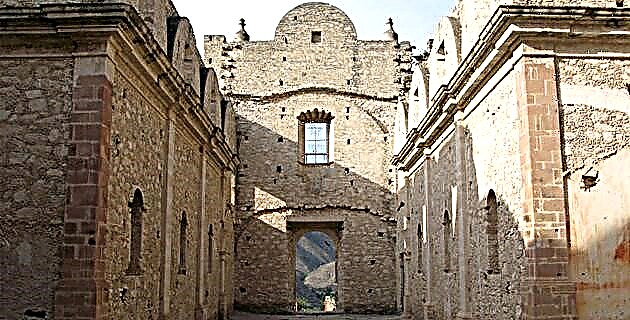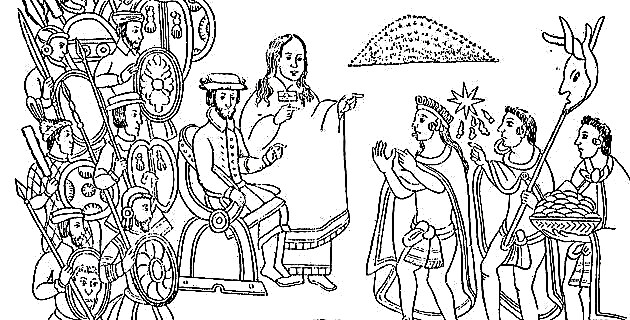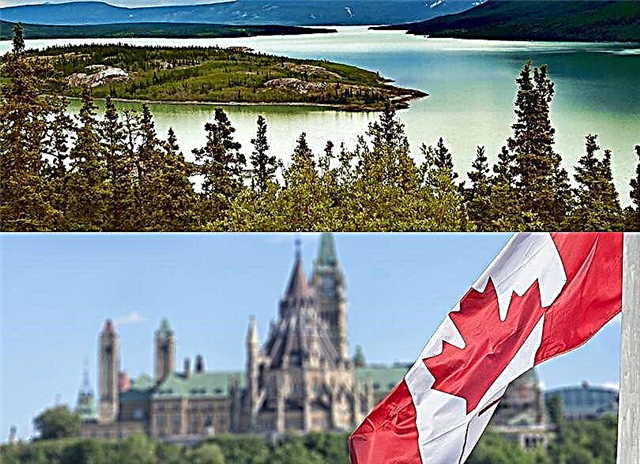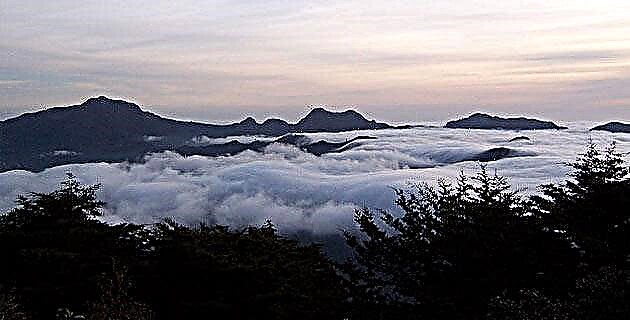
Undoubtedly, the great variety of ecosystems present in this region of central-eastern Mexico was the main reason why in 1997 the Mexican government declared it a “biosphere reserve”.
But the integrated management of such a large and populated natural area implies challenges that go beyond mere decree. Research on flora, fauna and other natural resources; the organization and training of the mountain people to actively incorporate them into the reserve protection work, as well as the difficult management to obtain the resources to finance all these tasks, are some of the challenges towards sustainability that for more than ten years The Sierra Gorda IAP Ecological Group and the mountain civil society have been facing each other.
SIERRA GORDA: ENCLAVE OF BIOTIC WEALTH
The natural importance of the Sierra Gorda Biosphere Reserve (RBSG) lies in its high representation of Mexican biodiversity, as evidenced by the existence of several ecosystems in a good state of conservation on a relatively small territory. This biodiversity responds to the combination of several factors related to the geographical situation of the Sierra Gorda. On the one hand, its latitudinal location places it on the strip of Mexican territory where the two great natural regions of the American continent converge: the Nearctic, which extends from the North Pole to the Tropic of Cancer, and the Neotropical, which extends from the Tropic of Cancer to Ecuador. The juxtaposition of both regions provides the Sierra with very unique climatic, floristic and faunal elements, known as Mesoamerican mountain biodiversity.
On the other hand, its north-south position, as part of the Sierra Madre Oriental mountain range, makes the Sierra Gorda a gigantic natural barrier that captures the moisture contained in the winds that come from the Gulf of Mexico. This function represents the main source of aquifer recharge for the fluvial currents and the underground mantles that provide the vital liquid both to the inhabitants of the Sierra and those of the Huasteca Potosina. In addition to this, the uptake of humidity registered by the orographic curtain that represents the Sierra generates a surprising variation in humidity within the reserve itself. Thus, for example, while on its eastern slope, where the Gulf winds collide, precipitation reaches up to 2 000 mm per year, generating various types of forests, on the opposite slope a “drought shadow” is created that gives place in an arid area where rainfall rates barely reach 400 mm per year.
In a similar way, the steep relief of the Sierra Gorda also contributes to ecological variation, because while at its summits, some above 3,000 meters above sea level, we find temperatures below 12 ° C, in the deep canyons that adjoin and that descend until the 300 msnm, the temperatures can reach the 40 ° C.
In sum, the combination of all these factors makes the Sierra Gorda one of the few continental regions where the main climatic zones of the country can be found: arid, temperate mountain, tropical deciduous and tropical humid. As if this were not enough, each of these macrozones contains a rich and well-preserved diversity of ecosystems, as well as a vast and unique biodiversity. Proof of this are the more than 1,800 species of vascular plants detected so far –many of them endemic–, as well as 118 species of macromycetes, 23 species of amphibians, 71 species of reptiles, 360 of birds and 131 of mammals.
For all the above, the Sierra Gorda is considered the most important biosphere reserve in the country, in terms of vegetation types and biotic diversity.
CHALLENGES TOWARDS SUSTAINABILITY
But for all the ecological wealth of the Sierra Gorda to be officially protected, a long work process was necessary that involved multiple tasks of scientific research, promotion among the mountain communities and management to obtain resources before various private entities and of government. It all started in 1987, when a group of Queretans interested in the protection and recovery of the natural wealth of the Sierra formed the Sierra Gorda iap Ecological Group (GESG). The information collected over a decade by this civil organization was essential for government authorities (state and federal) as well as unesco to recognize the urgent need to protect such a valuable natural region. In such conditions, on May 19, 1997, the Mexican government issued a decree by which 384 thousand hectares concerning five municipalities to the north of the state of Querétaro and surrounding areas of San Luis Potosí and Guanajuato were protected under the category of Reserve of the Sierra Gorda Biosphere.
After the significant achievement, the next challenge for the GESG and for the management of the Reserve consisted in the elaboration of a management program that would serve as a guide for the development of very specific actions and projects, in well-defined times and local settings. In this sense, the RBSG Management Program is based on the following philosophical premise: "The rehabilitation and sustained preservation of the ecosystems of the sierra and their evolutionary processes will only be achieved if it is possible to integrate the mountain population in activities that are translated into work and educational alternatives that benefit them ”. Consistent with this premise, the management program is currently developing four basic projects:
Environmental Education Project
Consisting of the monthly visit of trained promoters to 250 primary and secondary schools in the Sierra in order to create among the little ones an awareness of respect for Mother Earth; Through fun activities they learn about various ecological topics, such as mountain fauna, the hydrological cycle, environmental pollution, reforestation, the separation of solid waste, and so on.
Community Improvement Project
The search for socioeconomic alternatives that balance the material benefit of the highlands and the protection of the environment is proposed. This is achieved through productive diversification, ecological awareness and a change in attitude among adult mountain people. For this, the visit of promoters to the communities is necessary in order to train and support community organization, in order to facilitate the application of various eco-techniques aimed at the optimal use of natural resources. These actions include: more than 300 family gardens that have resulted in the nutritional and economic improvement of the highlands and in the recovery of soils with forest vocation; more than 500 rural stoves that optimize the same fire for several simultaneous uses, notably reducing the felling of trees; training campaigns, cleaning, separation and storage of solid waste for recycling, and 300 ecological latrines whose system keeps them dry, facilitating the sanitation of river channels.
Reforestation Project
It basically consists of the recovery of wooded areas and soils of forestry vocation, through reforestation with timber, fruit or exotic species, depending on the ecological and socioeconomic conditions of each community. Thus, it has been possible to promote the recovery of ecosystems and ecological niches in forests and jungles damaged by fires and by the irrational exploitation of unscrupulous loggers or ranchers, while generating sustainable jobs for the mountain population.
Ecotourism Project
It consists mainly of guided visits to various points of the reserve, in order to admire the flora, fauna and the landscape of the various ecosystems that exist in it. The objective of this project is that the mountain population can benefit by controlling the transport, the guide, the lodging and the feeding of the visitors, while they benefit from the mountain range. The visits can be made on foot, on horseback, by bicycle, by car or even by boat, and can last one or several days.
THE CURRENT CHALLENGE
As can be seen, it is difficult to guarantee a mechanism that ensures comprehensive management in this biosphere reserve without the firm, determined and constant participation of all those involved. The economic crisis that currently affects all of Mexico seems to be having a serious impact on the actions that have been carried out for more than ten years in favor of the reserve's sustainability. It has already been verified in the past that with the combination of efforts on the part of the different governmental instances, the mountain civil population and the Gesg as ngos, several concrete actions have been carried out in favor of the protection, recovery and sanitation of the natural resources of the Sierra, as well as the integral improvement of the standard of living of its inhabitants. However, much remains to be done; Hence, the call of the Reserve Directorate proposes a serious and conscious reflection on the great responsibility that all Mexicans have to cooperate for the conservation and sustainable management of this stronghold of nature.











